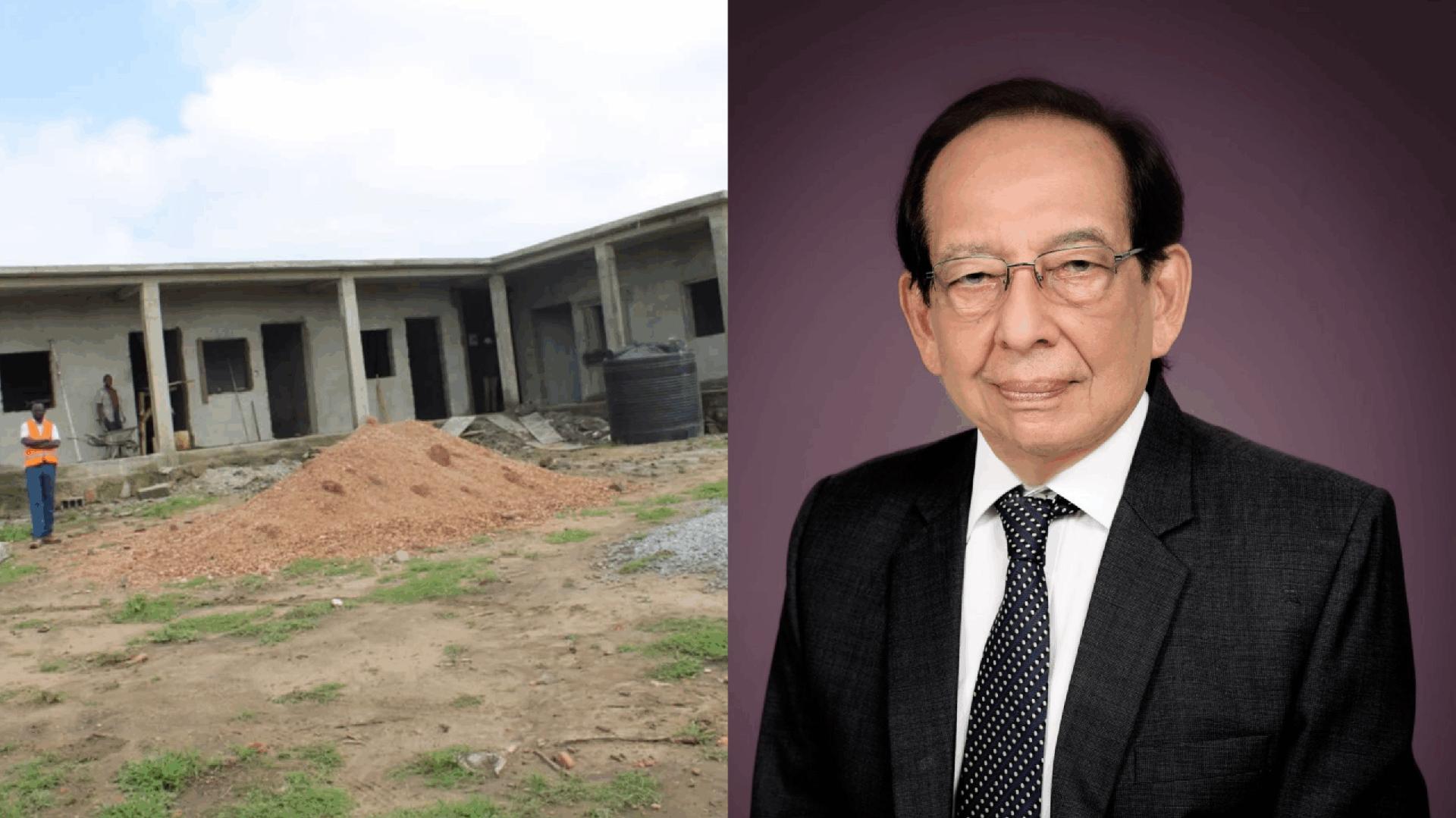Africa-Press – South-Sudan. The first seismological observatory centre constructed in Rejaf payam in Juba County of South Sudan’s Central Equatoria State will be called the Harsh Gupta Seismological Observatory Centre, named after veteran Indian earth scientist and seismologist, Professor Harsh Gupta.
On Monday this week, the Ambassador of India to South Sudan, Anil Nautiyal, inspected the construction project in Kolye West Village, accompanied by the Minister of Mining, Martin Gama Abucha, and Undersecretary Dr. Matiok Santio Akuei.
Ajak Ateng, the President of the Geological Society of South Sudan, told Sudans Post that the inspection of the project, nearing completion, follows a request by the Indian diplomat to visit the site.
“It was a request from the India Ambassador to visit a site with Hon. Minister and Undersecretary, Ministry of Mining. Since construction began, the embassy has never had a site visit, though the committee assigned used to give weekly and monthly updates on the project. It was in their best interest to visit the site, since 95% of the work has just been completed,” Ajak said.
The proposal to name the site after the Indian scientist, according to Ajak, was initially tabled for deliberations and subsequent approval by the cabinet in 2024, the same year the Ministry of Mining and the Embassy of India signed a Memorandum of Understanding (MoU) to establish the facility, which will also function as a geological data centre.
The MoU was signed in September by Dr. Cosmas Pitia Kujjo, the former Undersecretary at the Ministry of Mining, representing the government of South Sudan, and Vishnu Kumar Sharma, the former Indian Ambassador to South Sudan, representing India.
The agreement states that the Indian Embassy will provide funding, and the Ministry of Mining will oversee project regulation and promotion.
A seismological observatory centre is a specialised facility dedicated to monitoring, recording, and analysing seismic activity, such as earthquakes and other ground vibrations, using advanced instruments like seismometers and accelerometers.
The centre collects real-time data on seismic events, processes it to determine the location, magnitude, and characteristics of earthquakes, and contributes to global or regional seismic networks for research, hazard assessment, and early warning systems.
Equipped with cutting-edge technology, they often operate 24/7, staffed by seismologists and technicians who interpret data to study tectonic processes, assess seismic risks, and provide critical information for disaster preparedness and response.
On Monday, the President of the Geological Society of South Sudan confirmed to Sudans Post that the preliminary name of the centre has been assigned after the Indian seismologist in recognition of his contributions to the geological industry.
But who is Gupta?
Prof. Gupta, born on June 28, 1942, is a seismologist and senior scientist at the Indian National Science Academy, as well as the President of the Geological Society of India. He is also a member of the Atomic Energy Regulatory Board of India.
At 83, Prof. Gupta is globally recognised for developing criteria to distinguish artificial water reservoir-triggered earthquakes from natural ones, criteria now applied worldwide.
He is also known for identifying safe sites for reservoir construction. Another notable contribution is his medium-term forecast of an 8.0-magnitude earthquake in northeast India in 1986, which came true on August 6, 1988.
Prof. Gupta chaired the Steering Committee of the Global Seismic Hazard Assessment Program, where some 500 scientists worked from 1992 to 1999 to produce the Global Seismic Hazard Map.
He pioneered the Gas Hydrate program, delimited the zones for the stability of gas hydrates within India’s exclusive economic zone, and conducted detailed studies on the genesis of triggered earthquakes in the Koyna region, successfully making short-term earthquake forecasts.
Gupta’s contributions include leading the 3rd Indian Scientific Expedition to Antarctica, which was tasked with setting up and populating the first Indian wintering base in Antarctica during the Antarctic Summer of 1983–84.
This mission, despite a near-fatal MI-8 helicopter accident on the third day, succeeded in establishing Dakshin Gangotri with a plinth of 620 square meters, full facilities, and laboratories for scientific work—a world record that still holds.
After the devastating December 26, 2004, Mw 9.3 Sumatra earthquake and resultant tsunami that claimed over 250,000 lives in South and Southeast Asia, Prof. Gupta spearheaded the establishment of India’s tsunami warning system, which was completed in just 30 months and is now considered among the best globally.
Through a partnership between the Geological Society of South Sudan and the Geological Society of India, Prof. Gupta’s legacy could extend beyond the donation of a seismometer. The approval to name the centre after him could also immortalise his name.
For More News And Analysis About South-Sudan Follow Africa-Press






